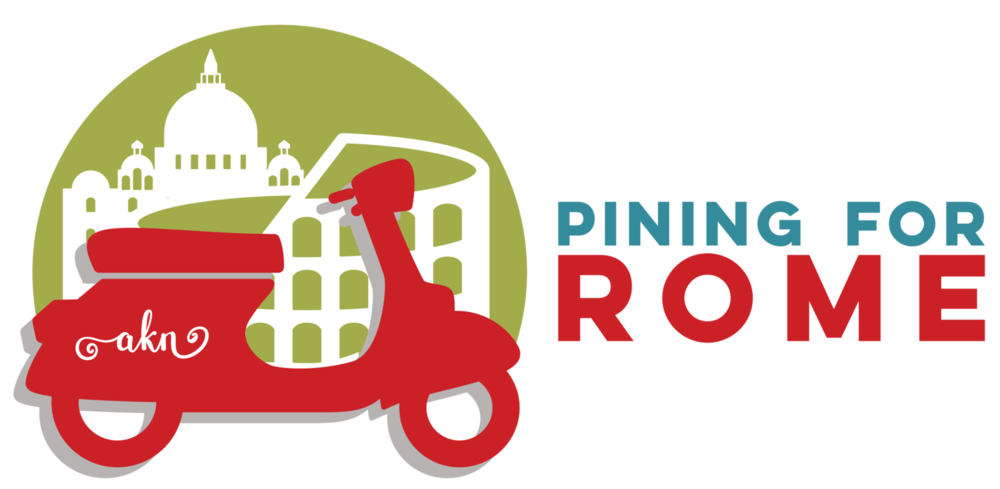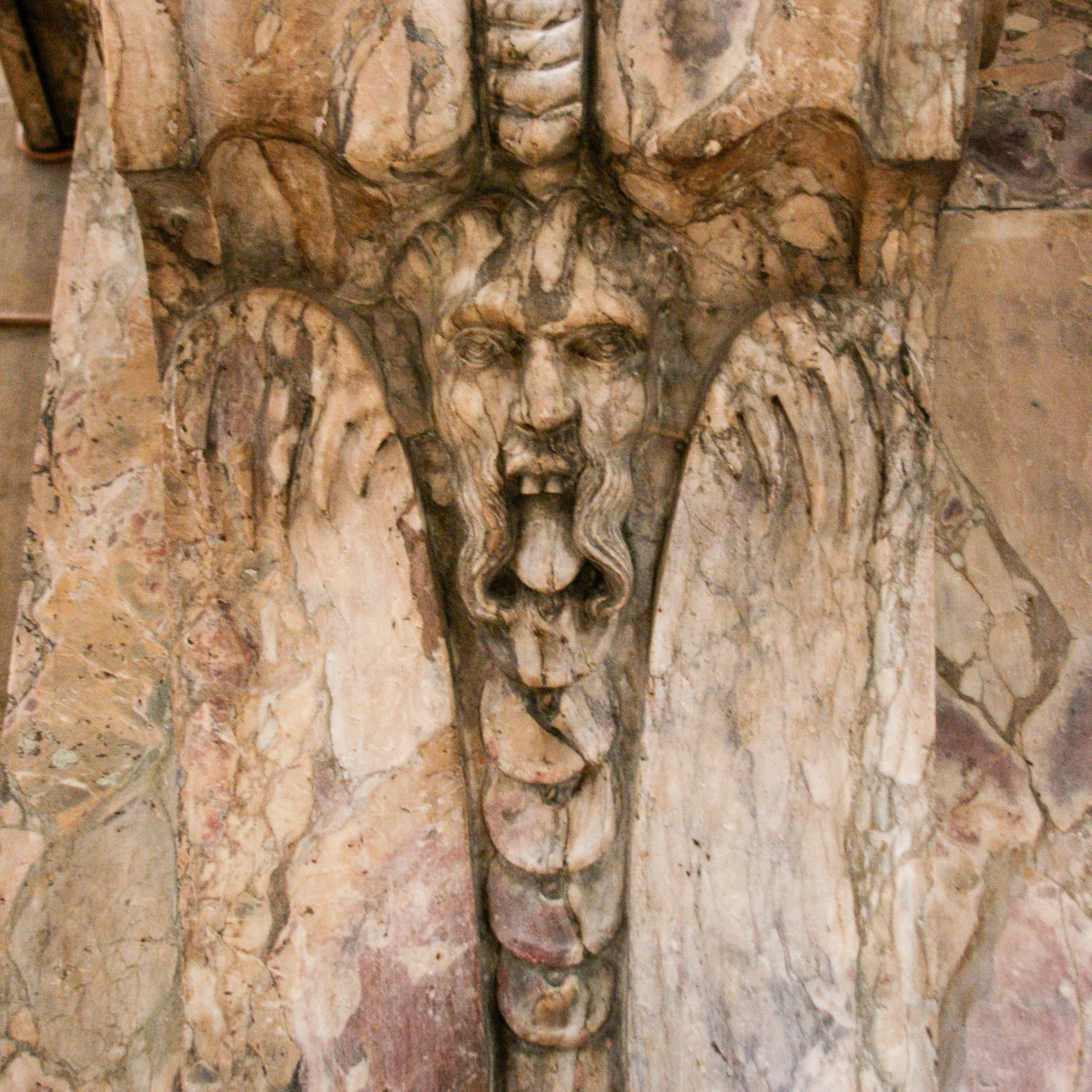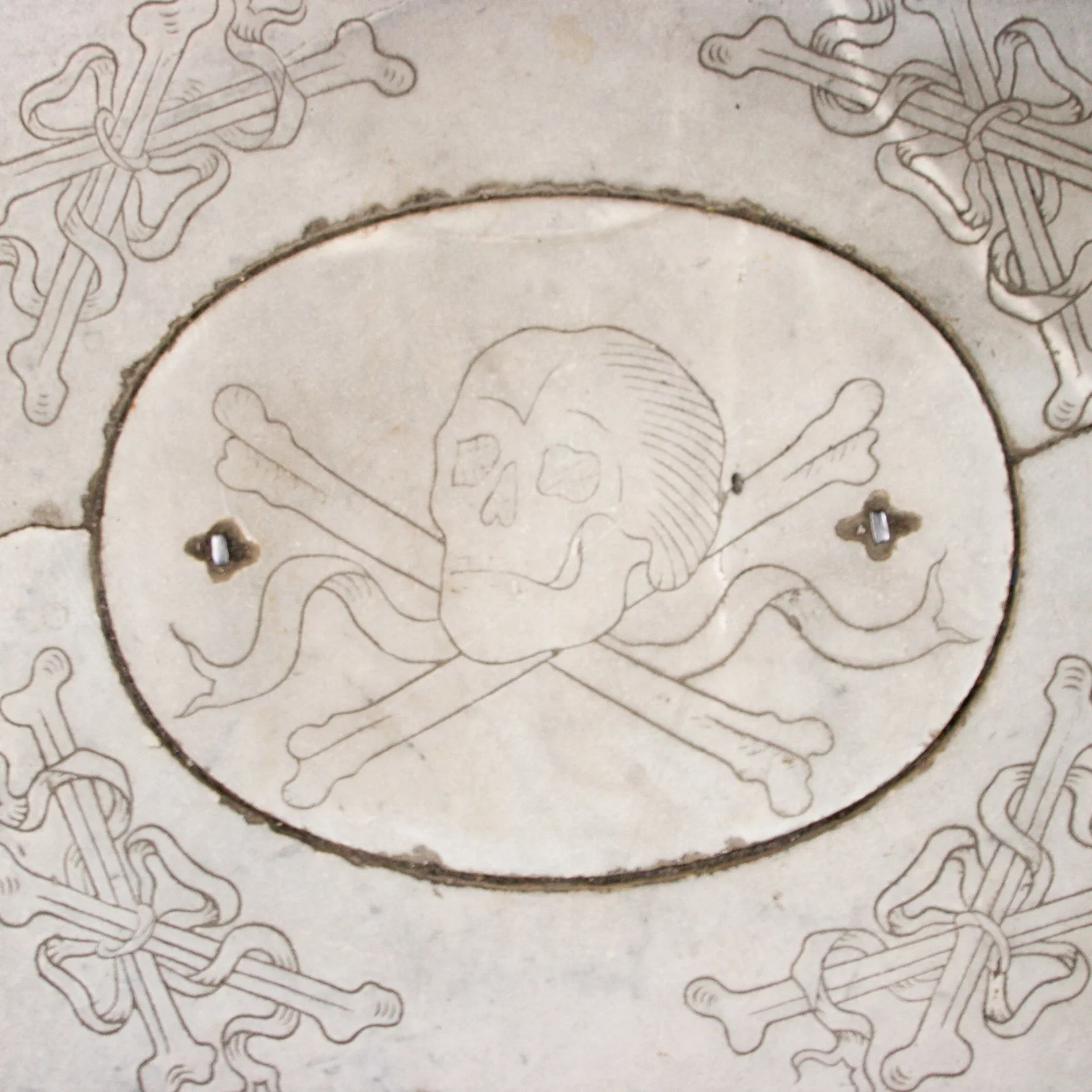Remember, You are Dust…
…and to dust you shall return.
I've been reading a lot about Carnivale... Mardi Gras... Fat Tuesday lately. They are festivals of excess -- costumes, parades, wine, women, song that are celebrated in exotic locations from New Orleans to Rio to Venice and beyond. But Carnivale and Mardi Gras all lead to Ash Wednesday. In the Christian church calendar, Ash Wednesday marks the beginning of Lent, a season of fasting and preparation for Easter.
Christians gather in churches around the world on Ash Wednesday, and many of them will leave with black smudges on their foreheads. Why? Because part of the traditional Ash Wednesday observance is an observance of mortality. Generally the priest or pastor or minister will dip her fingers in a bowl of ashes mixed with olive oil. She will then make a cross with the ashes on each person's forehead while saying, "Remember, you are dust, and to dust you shall return."
Italian churches are filled with reminders of our mortality, however. From the relics of saints displayed in gilded cases to the tombs on the floors and walls, Italian churches host beautiful and sometimes grim memorials. But they are only unusual when viewed with 21st century, North American eyes.
Consider the Renaissance Florentine or Roman perspective…
Surviving childbirth was celebrated as the event itself was very dangerous for both mother and child. In fact, Michelangelo's own mother died when he was six following the birth of his youngest brother.
In 1348 a pandemic of the Bubonic Plague originated in Italy and swept through Europe killing 20-30 million people in fewer than 50 years. In all, one-third to one-half of Europe's population died of the Plague in the late 1300s. This far-reaching pandemic opened the door to poverty and war as millions of people were left hungry and governments were weakened.
Bathing and cleanliness were associated with ill health. Gone were the days when Romans were obsessed with good hygiene. In fact, Michelangelo's friends noted that he sometimes went months at a time without removing his boots -- a situation which caused the skin on his legs and feet to peel away. Clearly, his lack of hygiene was exceptional even in his own time.
But the Sack of Rome impacted the Romans most, leaving generations with a deeply-ingrained knowledge of death:
“Charles V sent an army to Rome. When his troops arrived on May 6, 1527, they had not been paid in months; their leader, the Constable of Bourbon, was killed at the city gates. Desperate, furious, and leaderless, the troops abandoned the rules of warfare and ravaged the city. The streets were filled with the bodies of civilians as soldiers advanced through the city, neighborhood by neighborhood. By nightfall, Spanish troops had taken Piazza Navona and Germans held Campo dei Fiori.
The invading troops, many of whom were Lutheran, searched for cardinals and religious booty; they also committed terrible atrocities. Women and children were raped. Food stores and homes were burned. Rotting bodies littered the streets while terrified families barricaded themselves in their homes for weeks. Others fled to the countryside. To the troops, works of art represented the arrogance and excess of the papacy; as they rampaged through the city, they destroyed an untold number of priceless pieces. The stained glass from France that Bramante had designed for the new St. Peter’s Basilica was among the casualties.
Many of Rome’s artists joined the exodus from the city. Some, however, were not so lucky as to escape. In the midst of the siege, Francesco Mazzola, known as Parmigianino, was at work painting an image of Saint Jerome. German troops stormed in, threatening to kill him. The artist persuaded them to take his pens and drawings as a ransom for his life. Vincenzo da San Gimignano, another painter, became violently depressed. Visions of the horrors he witnessed rendered him unable to work, and he eventually took his own life.”
For the citizens of Italy, death and life were inexorably linked -- signs of which are still visible in Italian houses of worship today.
Giorgio Vasari’s Last Judgement | Duomo | Florence







